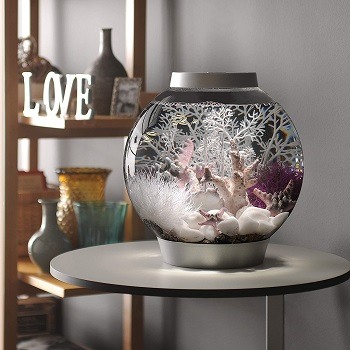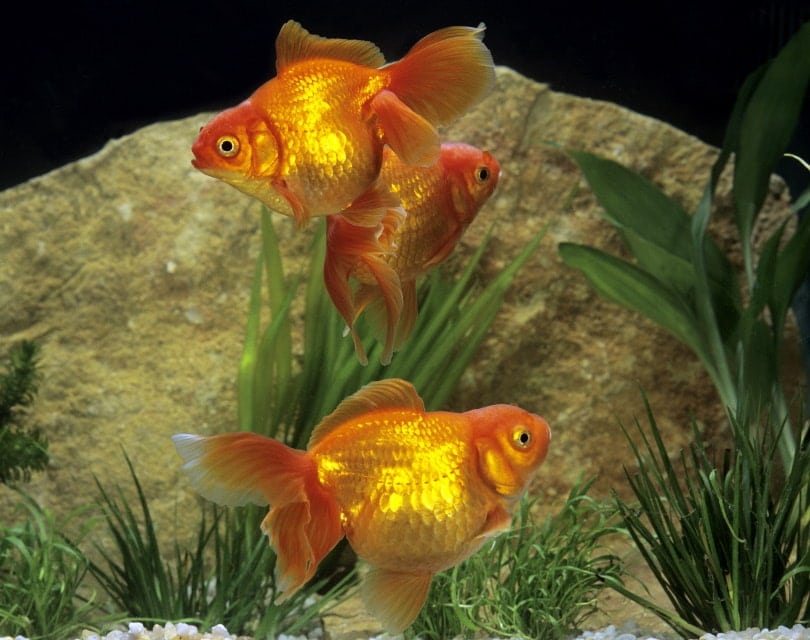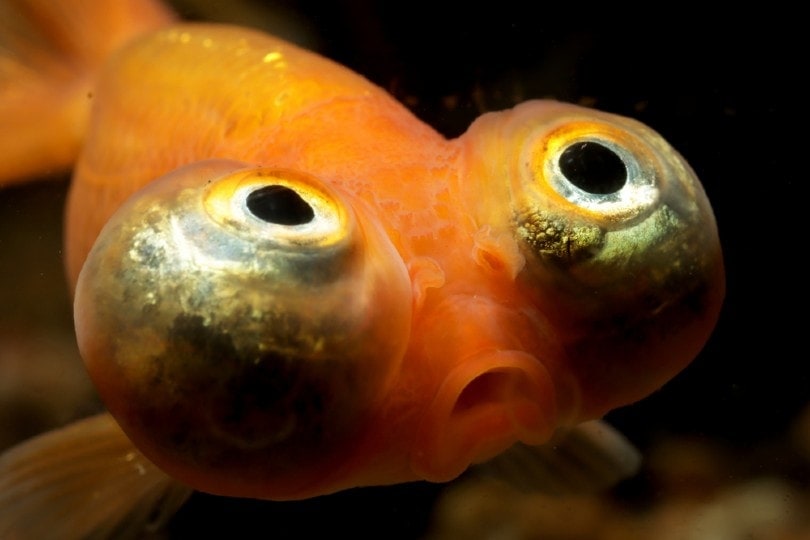9 Freshwater Goby Species for Your Aquarium (With Pictures)

Updated on
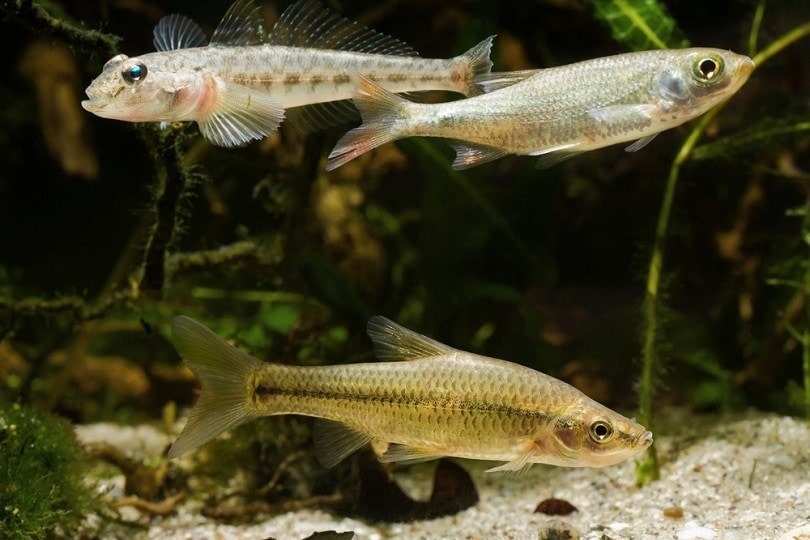
If you’ve been looking for an interesting addition to your aquarium, then look no further than the humble goby. Gobies are fascinating to watch and have almost reptilian movements. They can often be seen scurrying around tanks, up and down décor in search of food.
Let’s talk about what gobies are first, and then it’ll be time to see the top freshwater gobies for your aquarium!
What Are Gobies?

Gobies are fish from the family Gobiidae and are one of the largest fish families, with around 2,000 distinct species. There are freshwater and saltwater gobies, and their unique looks and behavior make them an interesting addition to a tank. Most gobies are bottom-dwellers and help your tank by functioning as part of the clean-up crew. They are great for cleaning up dropped food and helping your substrate stay turned. Gobies are generally peaceful and many stay under 5 inches in length. They are often prey species, so their tankmates should be chosen with care.
Don’t let their peaceful nature and prey status fool you; most gobies will eat anything they can get into their mouth. For this reason, many gobies are poor tankmates to dwarf shrimp, small invertebrates, and small, slow-moving fish.
The 9 Freshwater Goby Species For Aquariums
1. Neon Goby
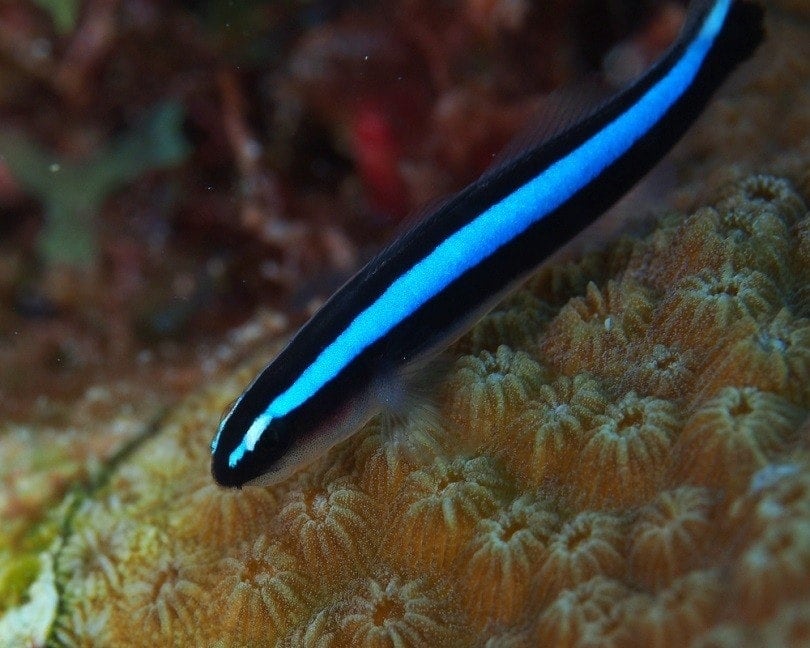
Neon gobies are also commonly called cobalt gobies. There is more than one variety of goby that falls under this umbrella name, and most varieties require brackish conditions after hatching. Once they move from their larval stage to adulthood, they can survive in freshwater. These gobies stay relatively small, usually under 2 inches, and consume algae and some small micro-prey, like brine shrimp. Females are usually wild-type colors, like brown and grey, but the males sport neon blue banding down their bodies.
2. Dragon Goby

Dragon gobies, also known as violet gobies, are territorial toward other gobies but make great tankmates to other types of fish. They are usually sold for freshwater tanks, but it is worth noting that they thrive in brackish water and will live longer, healthier lives if kept in a brackish environment. Dragon gobies are eel-like and feature a serrated dorsal fin and translucent violet coloration on the sides of the body. These gobies are almost entirely blind and even in a tank environment, they can starve to death if not hand fed or provided food very near to them.
Related Read: 5 Best Tank Mates for Dragon Fish Goby
3. Marbled Sleeper Goby
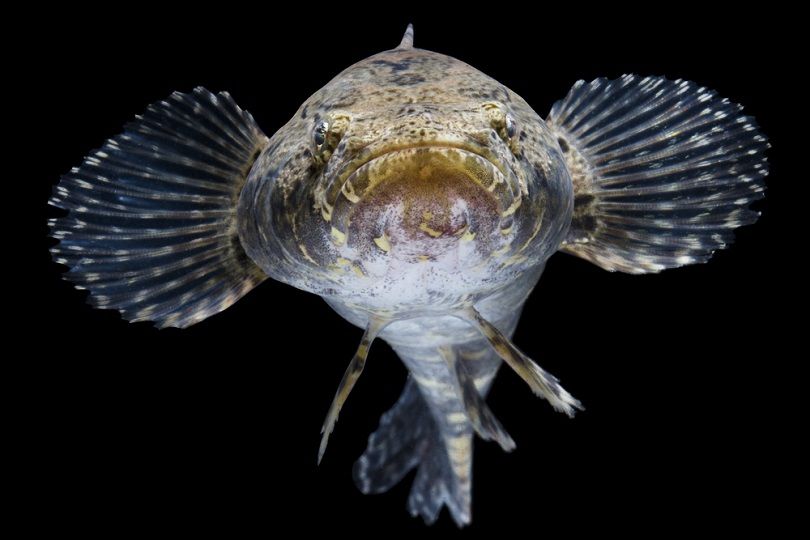
These are actually not true gobies, but they are grouped as gobies within the aquatics trade. Marbled sleeper gobies can reach sizes up to 2 feet in length and are farmed as food fish in some countries. It is recommended to keep them in tanks that are at least 100 gallons.
These fish will eat just about anything that fits into their mouth, and when they aren’t eating, they’re looking for something to eat. This, coupled with their size and a foul temperament, makes them poor candidates for community tanks. Under some circumstances, they can be kept with larger fish that will not disturb these bottom-dwellers. Their coloration is relatively drab, with a marbled appearance in shades of brown, tan, and white.
4. Bumblebee Goby
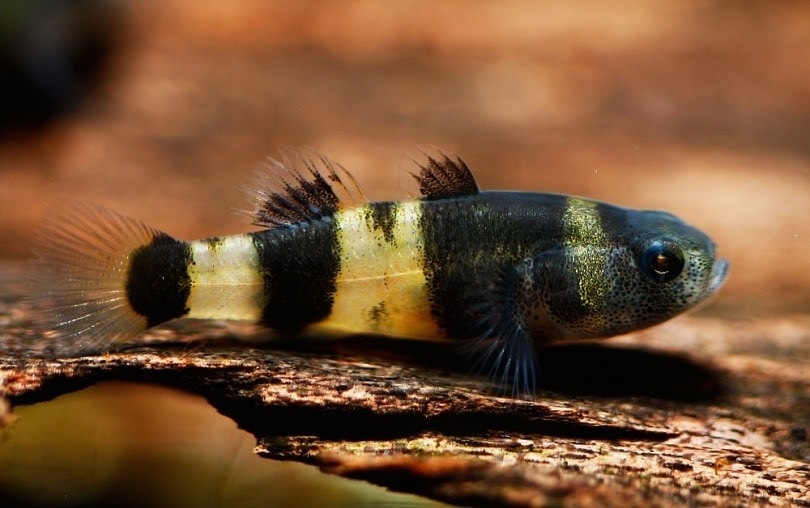
The bumblebee goby, also sometimes called the golden banded goby, only reaches around 2 inches in length. These fish get their name from their black and yellow or orange striped markings. Bumblebee gobies prefer brackish water but will survive in freshwater tanks, although it may shorten their lifespan. These gobies are active, making them entertaining additions to a tank. They are slow-moving, though, so they should not be kept with larger fish that may prey on them or with small, fast fish, like tetras and danios, that may outcompete them for food.
5. Desert Goby

One of the easiest species of goby to keep, the desert goby is full of personality. They tend to be big jumpers and need tanks with well-fitting lids. Desert gobies can be golden or wild-type grey or bronze, and the males feature black, blue, and yellow markings. They can live in small tanks and are easy to breed with a healthy tank environment.
6. Knight Goby
Knight gobies reach around 3.5 inches in length, and while they can survive in freshwater, they do best in brackish water. They prefer live food, so they should not be kept with tank mates that are smaller than them. Both males and females have gray-blue colored bodies with black or dark grey spots, with the males having longer fins than the females. These gobies love sandy substrate and lots of hiding places in their tank.
7. White-Cheek Goby
Another small variety of goby only reaching around 2 inches in length, the white-cheek goby is also sometimes called the dwarf dragon goby. These fish prefer cold water tanks with a high oxygen content and fast-moving current.
White-cheek gobies are generally peaceful and prefer to graze on algae and biofilm, although they will eat meaty foods from time to time, like bloodworms. They prefer fast-moving water and are sensitive to poor water quality. They have serrated dorsal fins, and while mostly brown or gray, they do have some yellow and gold markings with shimmery scales.
8. Algae Goby
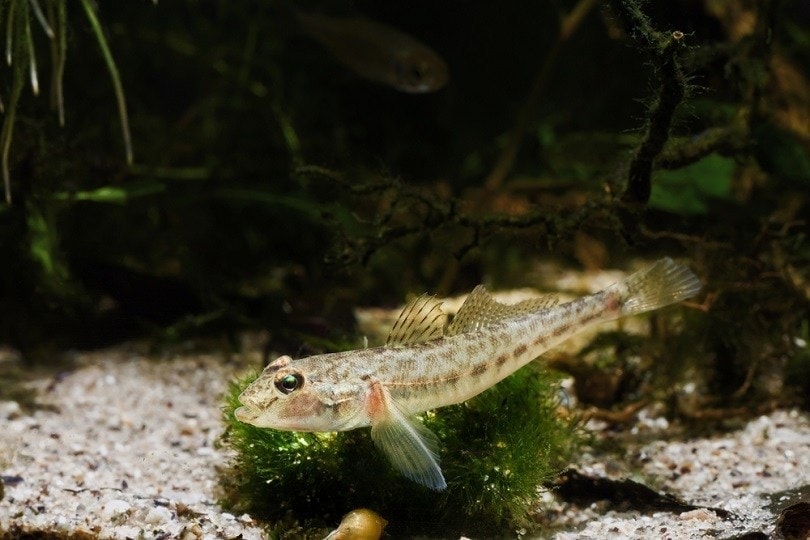
Also known as the green rifle Stiphodon goby, this goby is primarily an algae and biofilm grazer, although they will accept meaty foods on occasion. These gobies are somewhat rare in the aquatics industry but are brightly colored and attractive. The males have a neon greenish-blue coloration while the females are marked by cream and black stripes. Like the white-cheek goby, the algae goby is sensitive to poor water quality and needs a tank with a high oxygen content and fast-moving water.
9. Peacock Gudgeon
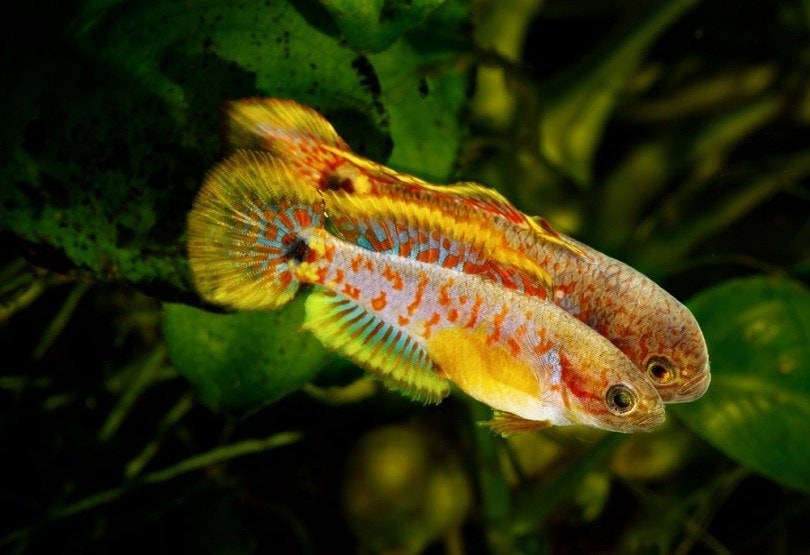
A variety of sleeper goby, the peacock gudgeon is a peaceful, small sleeper goby variety that thrives in freshwater community tanks. They do not like to compete for food, though, and do best with tank mates that live in the middle or upper water column. Peacock gudgeons do not require large tanks but prefer to be kept in pairs. Both males and females are brightly colored with accents of yellow, blue, red, and orange, but the males have a distinctive hump on their head.
Final Thoughts
Gobies are one of the most diverse groups of fishes in the world, which means there is a goby for almost every type of aquarium. Gobies are unusual fish with interesting behaviors, making them great additions to tanks. When choosing a goby for your aquarium, it’s important to know exactly what type of goby you are getting so you don’t end up with a brackish or saltwater goby in your freshwater aquarium. Knowing what you’re getting will also ensure you don’t end up with a fish much too large for your tank and will prevent fish loss from unintentionally choosing an aggressive or predatorial type of goby.
Check out some of our top trending posts:
Featured Image Credit: Aleron Val, Shutterstock

